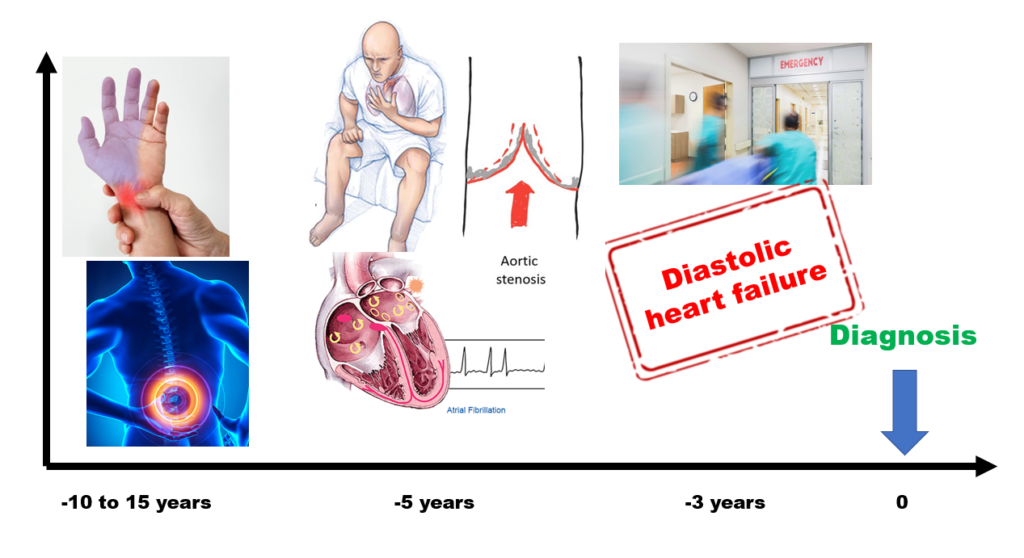
When to suspect Cardiac Amyloidosis?
The suspicion of cardiac amyloidosis is based on pattern recognition. Red flags are raised when an elderly patient has heart failure symptoms which are recurrent or resistant to conventional heart failure medications.
Common associations:
- Very early or remote history (5-10 years prior)- Carpal tunnel syndrome, spinal stenosis, bicep tendon rupture, and similar
- Closer to diagnosis (3-5 years prior)- Heart failure with preserved ejection fraction (HFpEF), atrial fibrillation, aortic stenosis
- At the time of diagnosis- multiple admissions for heart failure
Timeline to the diagnosis of cardiac amyloidosis is summarized in figure 1

Risk group:
In addition to above associations, additional risk factors have been identified:
- Elderly patient (males >65 years, females >70 years)
- Left ventricular thickness ≥ 14mm (figure 2)
- “Red flag” signs-
- Relatively low voltage ECG (compared to the LVH on echo)
- Polyneuropathy or dysautonomia (orthostatic symptoms)
- Bilateral carpal tunnel syndrome
- Persistent troponin elevation
- Disproportionate BNP elevation
